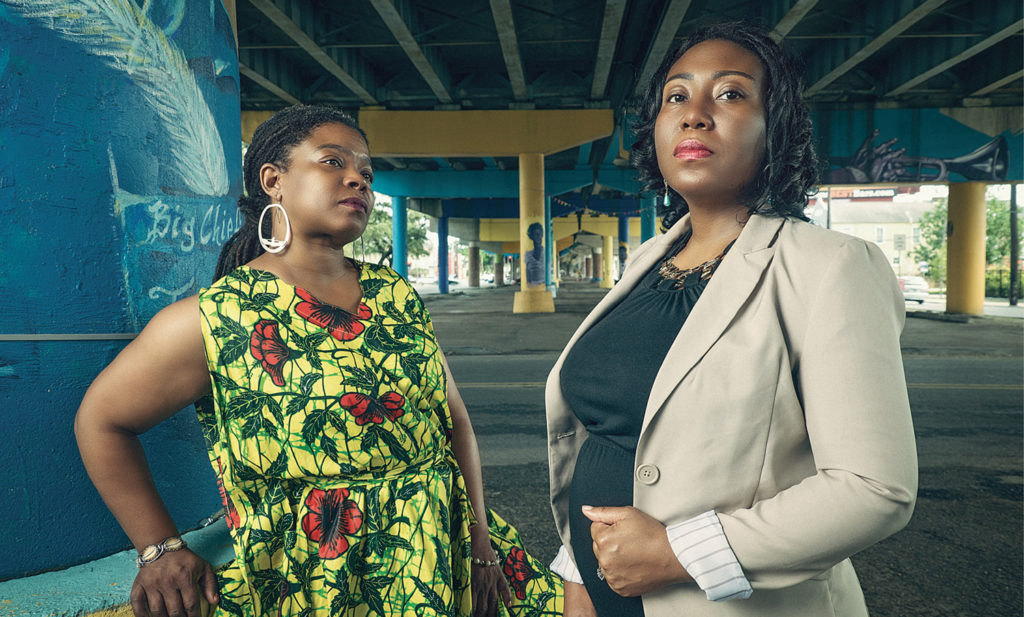
When Nyree Ramsey visited New Orleans in 1995, three words came to mind: “This is home.”
“I loved the culture, the food, the sense of community—all things intergenerational,” she says. “My father was a musician, an immigrant from Jamaica, and my mom comes from a close-knit artistic family in New York. I understand that sense of family and community.”
It’s an ethos that Ramsey hopes to nurture as cultural innovation district director for the Claiborne Corridor Project, an attempt to rejuvenate New Orleans’ Seventh Ward and Tremé neighborhoods, which, more than a half-century ago, were bulldozed to make way for the elevated I-10 expressway.
Construction uprooted more than 300 thriving African American businesses, inviting blight along a two-mile stretch of Claiborne Avenue, home to the city’s historically black neighborhoods. The 25-block Claiborne Corridor Project aims to lay out the welcome mat for those who left decades ago, and for those forcibly relocated by Hurricane Katrina in 2005.
“My job is to get the project up and running, helping the city and all our partners identify resources to make that happen,” says Ramsey, who served previously as the city’s first black director of arts and tourism under former Mayor Ray Nagin. “We’re having multiple conversations and engagements with the community to capture their design ideas.”
Fellow Vanderbilt alumna Asali DeVan Ecclesiastes—the two met on campus in 1993—is Ramsey’s colleague in this work. Ecclesiastes helped relaunch the concept of a marketplace under the interstate while working in Mayor Mitch Landrieu’s administration as Claiborne Corridor program manager for the Network for Economic Opportunity.
“I was excited to have Nyree join me in our neighborhood’s cultural renaissance,” says Ecclesiastes, who now is director of strategic neighborhood development for the New Orleans Business Alliance and continues to manage the Claiborne Corridor work. “The work we are doing transcends administrations, requiring long-term commitment to culture and the expansion of a beloved community.”
At a recent New Orleans City Council meeting, more than 100 residents turned out to voice support for the Claiborne Corridor. “It’s exciting to hear them talk about the importance of the project, because it gives them an opportunity to reimagine the space in a beautiful way that they remember,” Ramsey says.
The project has received an $820,000 grant from the U.S. Department of Commerce’s Economic Development Administration, along with matching funds from several foundations. Construction of a public market is scheduled to start in 2019.
Where more than 300 live oak trees once grew, concrete freeway pillars now stand, though they’re painted with images of area icons like jazz great Louis Armstrong and civil rights crusader Alice Thompson. Much more exciting things are in store.
“This is an equitable development project that will achieve sustainable growth in an area that has been traditionally underdeveloped and systematically disinvested,” Ecclesiastes says. “We are building the capacity of residents to take advantage of economic opportunity in their own backyards, and working to develop opportunities beyond the borders of state and country. New Orleans has always been an international gem.”
“This is going to be transformative,” adds Ramsey. “When people come back to New Orleans, it’s like, ‘Wow, this is for me. This is my home. I remember this feeling.’ People are returning home to something better than it was when they left.”
Ramsey, who was forced to leave the city herself after Katrina, cultivated many of her sensibilities at Vanderbilt, where she was a Posse Scholar. “The model at Vanderbilt was carpe diem: Seize the day,” Ramsey says. “Every day we have an opportunity to do something wonderful and magical in our community, by our planning, our programming, and what we’re executing.
“I learned not to be discouraged when something looks different than what you expected,” she adds. “Being uncomfortable is OK because it can motivate you, and I learned how to swim upstream at Vanderbilt.”
—ANDREW FAUGHT
For more information about the Cultural Innovation District, visit vu.edu/cid-nola.